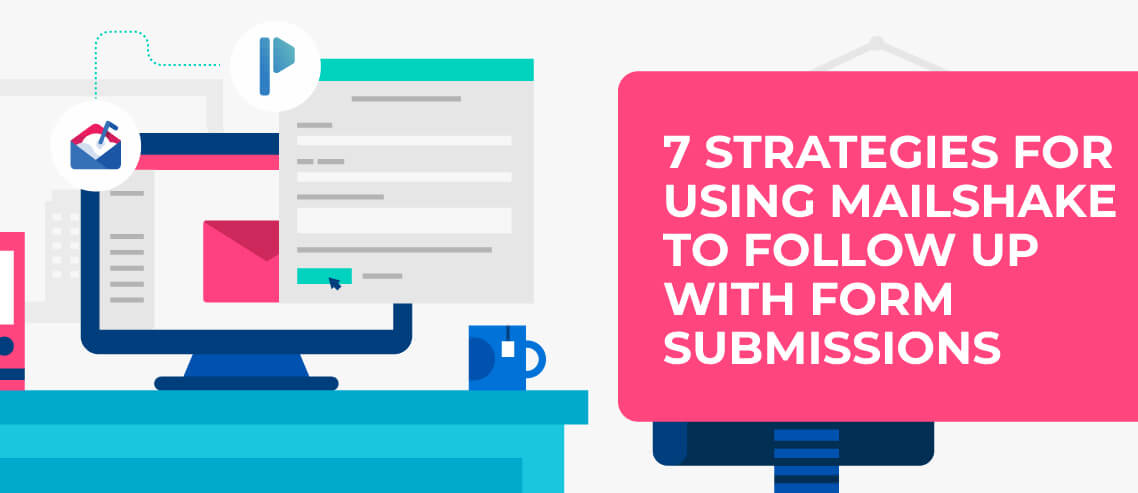How to Personalize Any Cold Email Using The “CCQ Method”
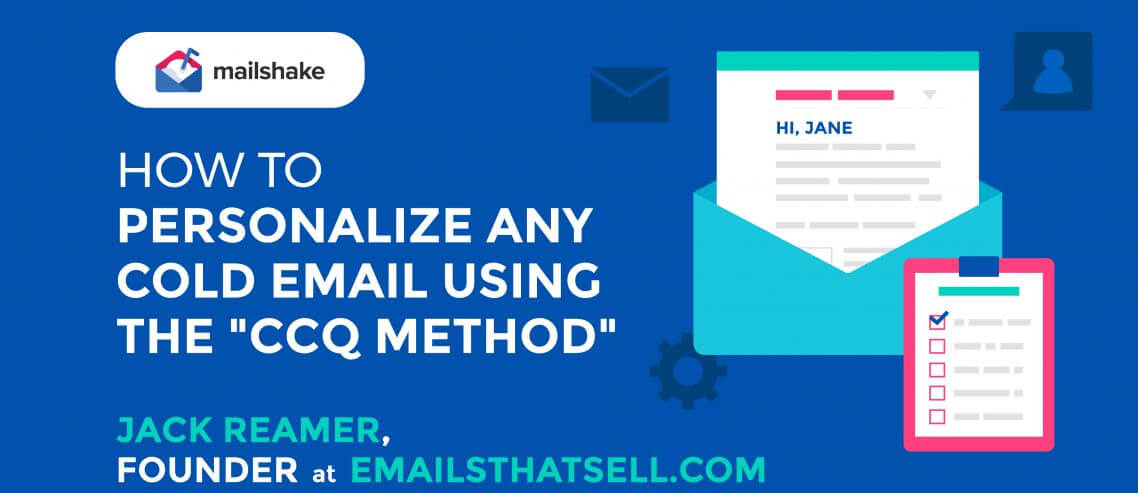
Contents
Personalization has been a hot topic among sales reps and marketers for a while now, particularly in the B2C world. But – as we all know – where B2C goes, B2B follows.
I recently spoke to Jack Reamer, B2B Lead Gen expert from Emails That Sell, to find out what personalization means for cold emailers in the B2B space.
Emails That Sell aims to make life easier for the cold emailers out there, providing help with email copy, strategy, and – of course – personalization, so Jack was my go-to for insights on all things personalization.
Why Bother With Personalization? [1:10]
Simply put: to double your reply rate.
After analyzing tens of thousands of emails, SalesLoft found that you’ll get a 112% lift simply by adding personalization. That’s a huge reward for just a little extra effort.
Jack warns that cold emailers who are not already practicing personalization are way behind the times. “Personalization is going to be a mandatory practice for cold emailers – starting six months ago! If you want to stand out; if you want to win your prospects’ attention, this is essential today.”
There are other benefits of personalization too – for insance, it’s great for deliverability. Spam filters like to see variety, so open rates are going to drop if you use the same template over and over again. This means that over time, even the best performing email stops performing – it’s a sliding scale as you increase volume.
And personalization delivers a silver bullet for this common problem. What’s not to like?
Is There Ever a Time When You Shouldn’t Personalize? [3:00]
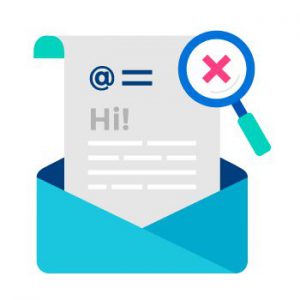
Cold emailers who aren’t particularly careful about who they’re reaching out to shouldn’t personalize, according to Jack. That includes if you send to risky or unverified emails.
He explains that “if that email ends up bouncing and there’s no prospect on the other end of that inbox, you’ve just wasted a lot of time. This is why personalization works so well – unlike every other aspect of emailing, you can’t just click a few things and off you go.”
Prospects and sales data are easy to come by nowadays. But if there’s a chance that emails are going to bounce, then adding personalization is simply going to drain your time.
Jack says: “I’m a big believer of sending only to valid emails for many reasons, and not wasting your time with personalization is one of them”.
There’s no reason to not at least run an email verification on your list – these days it is dirt cheap, with easy-to-use services like Voilanorbert. Yet the rewards can be massive.
What Should I Personalize? [5:18]
Personalization can sound daunting to cold emailers used to just firing off the same email template time and time again, but as Jack explains, it really doesn’t have to be that difficult or time-consuming.
“You should start by personalizing the intro sentence in your cold email,” he says. “It’s really easy to add a merge tag in the beginning of your email. You’re not really going to have to change the rest of the body of your template.”
Why the intro sentence?
Studies have found the preview text is a better indication of your open rate than your subject line right now. According to experts, this could be because we have “subject line blindness” caused by cold emailers or spammers who write misleading subject lines. This means we’re now looking more to the preview text to see if it’s worth our time to open this message.
Jack explains: “If right after the name you go into something that no other salesperson or SDR is mentioning to this prospect, it’s much more effective for getting their attention and earning that open.
“From a psychological perspective, if you start off the email with something that shows you’ve done the legwork, there’s a bit of reciprocity going on, especially if it’s a compliment. We’re using liking and reciprocity – some really powerful sales psychology tactics – in order to get that reply.”
According to the SalesLoft study cited above, personalization has diminishing returns. So personalizing a little bit offers a big lift, but writing custom templates for every prospect yields diminishing returns for that extra effort.
This is good news, because we don’t have to customize everything for each prospect: that would be a huge amount of work and the research is showing that it’s just not worth it.
Jack suggests that “the sweet spot lies between 20% and 50% of that cold email being personalized, so here’s the grain of salt I take from this: if your cold email is 4-5 sentences, dropping in one custom sentence should get you into that sweet spot of personalization and 2X replies.”
Let’s face it: even if you don’t hit 2X replies, 1.5X is going to be worth it for your business. Think of the value of a new customer. Increasingly, personalization is becoming the obvious choice, as it’s going to help companies take up more market share.
What’s more, personalization is a tool that every single cold emailer has under their belt. So let’s not be lazy – let’s just make it happen.
What Does the Process Look Like? [8:46]
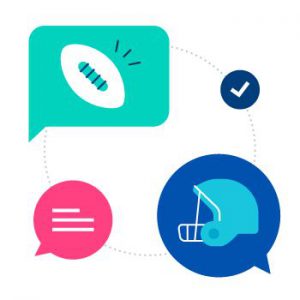
Jack has a super useful personalization acronym: CCQ.
That’s:
-
- Commonalities
- Compliments
- Questions
“These are a couple of buckets you can look for things to pull from each prospect in order to create that custom intro sentence.”
According to Jack, “the most powerful personalization you can add in a cold email is commonality.”
He explains that finding facts you can show your prospect to prove you share something in common isn’t always easy. But if you can swing it, then you’ve instantly separated yourself from the pack of salespeople who are vying for the prospect’s attention.
Jack suggests commonalities such as similar hobbies and passions, both living in the same city, having worked for the same company, or having mutual friends and acquaintances. The latter is one he encourages everyone to try out. Simply go to sales navigator, pull up the prospect, and find out if you know any of the same people.
So what about prospects where you don’t have commonalities? Go ahead and look for compliments.
Jack recommends starting by “checking out their About section on their LinkedIn profile – a third of prospects will have a nicely written About page, and if they say anything like ‘I’m passionate about…’ or ‘At my company we believe that…’ or ‘I started here and now I’m…’ – they’re basically telling you what they’re proud of.
“Grab that and compliment them. They’re basically telling you things they want the world to know so that’s firepower we can use to get this conversation going.”
When it comes to questions, ask about something specific, Jack advises.
“If there’s one takeaway here, it’s that if you get specific about something specific that this prospect is excited about working on, you’re going to do personalization well.”
What Do You Do When Prospects You’re Selling to Aren’t Active Online? [13:11]
For those of us operating in some sectors, the idea that prospects wouldn’t be active online seems preposterous, but this is an issue for many working in industries like construction.
Jack has a solution.
“If somebody isn’t active on social, grab that prospect’s domain of their company and look on their About page. Again, you’re looking for CCQ.”
This is a huge help: personalization doesn’t necessarily need to be on an individual level – company-level personalization is still personalization. And when finding this info only takes 30 seconds or so – why wouldn’t you?
Indeed, Jack advises against trying to become an “online Sherlock Holmes.” He warns that “it can backfire on you if you dig too deep and come up with something that prospect just isn’t comfortable with you knowing.”
What Are the Roles and Team Members You Need to Have in Place to Succeed at Personalization? [19:37]
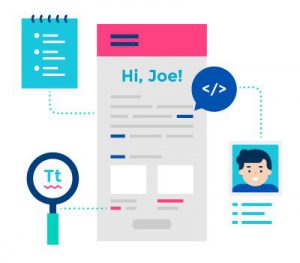
Jack says: “We do personalization as a service, so if you don’t want to screw with this, there are options out there.”
But if you want to go it alone, first you’ll need a copywriter to review that template.
“It takes just a couple of minutes to massage a template to put a custom intro sentence and this extra merge tag,” he notes. The next role would be the researcher.
This person is going to crawl through the internet and find the CCQ element and the other merge tag you describe. But the researcher’s job is not to put a ready-to-send snippet in that CSV file. They just do the hardcore research and put the text in the CSV file.
The final step is proofreading. This job entails making sure you don’t send anything with an error.
“This way, your prospects are going to get a crisp email that’s written for them.”
Check out emailsthatsell.com and subscribe to Jack’s email list for regular tips, tools, and strategies on personalization.


